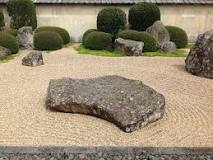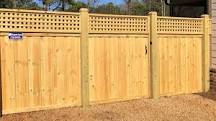If you’re wondering when to dethatch your lawn, the answer typically falls between late spring and early fall. Timing is crucial because dethatching at the wrong time can stress your grass and hinder its growth. So, let’s dive into why these months are your best bet!
Why Dethatch?
Dethatching is all about removing that layer of dead grass, roots, and debris that can build up on your lawn. This layer, known as thatch, can suffocate your grass and prevent water and nutrients from reaching the soil. By dethatching, you help your lawn breathe and thrive.
Best Months to Dethatch
Late Spring
- Ideal for Cool-Season Grasses: If you’ve got cool-season grasses like Kentucky bluegrass or fescue, late spring (around April to May) is prime time. The temperatures are warming up, and your grass is just waking up from its winter slumber.
- Growth Surge: During this period, the grass is actively growing, so it can recover quickly from the dethatching process.
Early Fall
- Perfect for Warm-Season Grasses: If your lawn features warm-season grasses like Bermuda or zoysia, aim for early fall (September to October). This timing allows the grass to recover before the colder months hit.
- Less Stress: The temperatures are cooler, making it easier for your lawn to bounce back without too much stress.
Signs Your Lawn Needs Dethatching
Before you grab that dethatcher, check for these signs:
Thick Thatch Layer
If you can peel back a section of your lawn and see a thick layer (more than half an inch), it’s time to take action.
Poor Water Absorption
Notice puddles forming on your lawn after watering? That’s a sign that water isn’t penetrating through the thatch layer.
Sparse Growth
If certain areas of your lawn look patchy or unhealthy despite regular care, dethatching might be just what it needs.
Summary
Dethatching is a simple yet effective way to keep your lawn healthy and vibrant. Remember, late spring is perfect for cool-season grasses while early fall suits warm-season varieties best. Keep an eye out for those telltale signs of thatch buildup so you can give your lawn the TLC it deserves!
FAQ
How often should I dethatch my lawn?
Most lawns benefit from dethatching every 1-3 years, depending on how quickly thatch builds up in your area. If you notice a thick layer forming sooner, don’t hesitate to tackle it!
Can I dethatch my lawn myself?
Absolutely! You can rent a dethatcher from a local hardware store or even use a rake if you’re feeling ambitious. Just make sure to follow up with proper watering and fertilization afterward.
What if I miss the ideal dethatching months?
No worries! If you miss the ideal window, you can still dethatch later in the season. Just be mindful of your grass type and try not to do it too close to winter when growth slows down.
Will dethatching kill my grass?
Dethatching can temporarily stress your grass, but if done at the right time and with proper care afterward, it shouldn’t kill it. In fact, it’ll help improve its health in the long run!
Is there a best time of day to dethatch?
Early morning or late afternoon is ideal when temperatures are cooler. Avoid the heat of midday to minimize stress on your grass.







